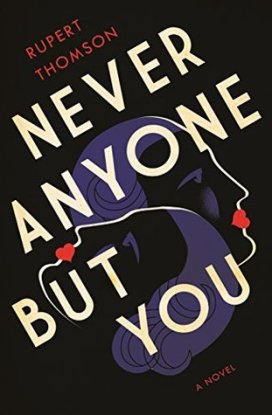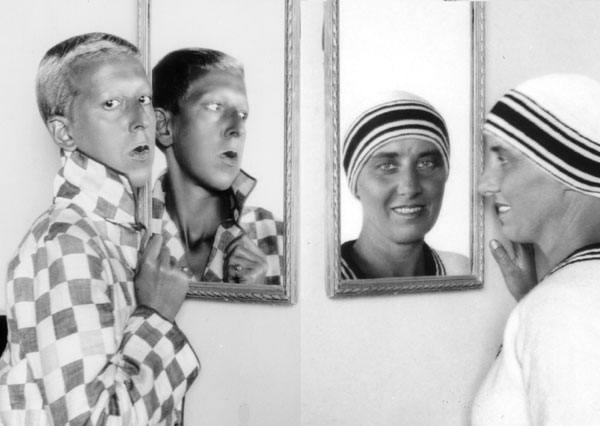 While Frida Kahlo is arguably the world’s most famous woman artist, most women in the surrealist movement have been overlooked. But Frida’s sister surrealists now seem to be experiencing a long overdue resurgence, with recent international exhibitions showcasing Leonora Carrington, Meret Oppenheim, and Dora Maar. The 2017 documentary film, Out of the Shadows, focuses on Penny Slinger. (For more on Slinger and her work, check out her spookily accurate Dakini Oracle.) American art photographer Lee Miller is the subject of The Age of Light, Whitney Scharer’s boldly feminist debut novel which sold to Little Brown and Company for seven figures, following a fierce bidding war.
While Frida Kahlo is arguably the world’s most famous woman artist, most women in the surrealist movement have been overlooked. But Frida’s sister surrealists now seem to be experiencing a long overdue resurgence, with recent international exhibitions showcasing Leonora Carrington, Meret Oppenheim, and Dora Maar. The 2017 documentary film, Out of the Shadows, focuses on Penny Slinger. (For more on Slinger and her work, check out her spookily accurate Dakini Oracle.) American art photographer Lee Miller is the subject of The Age of Light, Whitney Scharer’s boldly feminist debut novel which sold to Little Brown and Company for seven figures, following a fierce bidding war.
 Though I was familiar with these artists, Rupert Thomson’s novel, Never Anyone But You, reveals two extraordinary women I’d never heard of—Lucie Schwob aka Claude Cahun (1894 – 1954) and Suzanne Malherbe aka Marcel Moore (1892 – 1972). They met as teenagers and fell irrevocably in love, beginning a passionate relationship which would endure until Cahun’s death. In a twist of fate no novelist could invent, Moore’s widowed mother married Cahun’s divorced father and the two secret lovers became stepsisters, enabling them to live together without suspicion in an age when lesbian relationships were taboo. Moving to Paris in the 1920s, they adopted androgynous pseudonyms and became involved in the newly fledged surrealist movement. In 1937 they left Paris for Jersey. Later, when the Germans occupied the island, the women created an anti-Nazi propaganda campaign. They were arrested and sentenced to death, but the war ended before their executions could be carried out.
Though I was familiar with these artists, Rupert Thomson’s novel, Never Anyone But You, reveals two extraordinary women I’d never heard of—Lucie Schwob aka Claude Cahun (1894 – 1954) and Suzanne Malherbe aka Marcel Moore (1892 – 1972). They met as teenagers and fell irrevocably in love, beginning a passionate relationship which would endure until Cahun’s death. In a twist of fate no novelist could invent, Moore’s widowed mother married Cahun’s divorced father and the two secret lovers became stepsisters, enabling them to live together without suspicion in an age when lesbian relationships were taboo. Moving to Paris in the 1920s, they adopted androgynous pseudonyms and became involved in the newly fledged surrealist movement. In 1937 they left Paris for Jersey. Later, when the Germans occupied the island, the women created an anti-Nazi propaganda campaign. They were arrested and sentenced to death, but the war ended before their executions could be carried out.
As artists, they are best known for their collaborative and highly stylized portraits in which Moore photographed Cahun who assumed startling personae, from dandy to circus performer to vamp.

Claude Cahun and Marcel Moore in a double self-portrait
Rupert Thomson describes his first encounter with their work:
I opened a copy of the London Review of Books and was stopped dead in my tracks by a black-and-white photograph of a woman with a shaved head and no eyebrows, her face half-turned away from the camera. She appeared to be wearing black eye-shadow and black lipstick. She looked like a vampire. . . . I was astonished to discover that the photograph had been taken in 1928. It looked so very modern.
How is it possible, I asked him, that Cahun and Moore are not better known?
Thomson believes that they were simply too radical, too far ahead of their time. Surrealism was a movement dominated by men who were more comfortable to see women as muses rather than independent artists. Most of Cahun and Moore’s work remained obscure in their lifetime and much of it was destroyed by the Nazis.
“After Moore’s death in 1972, the two women completely disappeared from history,” Thomson told me. “References to Claude Cahun usually described her as a man, and [it was] mistakenly reported that ‘he’ had died in a concentration camp.”
Controversially, the current Wikipedia entry for Cahun erases her sex yet again by referring to her with the gender neutral “they.”
After biographer Francois Leperlier rediscovered Cahun in the 1980s, she has been the subject of many international art shows, including one curated by David Bowie in New York in 2007.
Thomson narrates his luminous, deeply moving novel through Moore’s first person voice. He thought that this approach would enable him to write a “Great Gatsby” narrative, with the “conventional” Moore describing someone extraordinary. “Moore would be my Nick Carraway, and Cahun would be my Gatsby. As the novel developed, however, I was surprised to discover that Moore was at least as interesting as Cahun, if not more so.”
Portraying two remarkable women over the sweep of more than fifty years would be formidable for any author, yet Thomson managed to keep his narrative under 350 pages—a feat which required great discipline. Paris in the 1920s and 1930s was such a rich subject in itself, he risked getting lost in it, he said. “While researching, I constantly came across extraordinary stories. They clamoured to be included, but I would set them aside, since it’s the imagined facts – the emotional facts – that have to be given priority. Real facts are servants of the narrative. They have to earn their place.”
Though Moore and Cahun were born more than a century ago, Thomson believes their story is “almost uncannily relevant today.” They devoted their lives to fighting the things we are still fighting in 2018: “patriarchy, homophobia, gender stereotyping – fascism in all its forms.” Their photographs “pushed gender boundaries and explored the idea of what it meant to be a woman.” If Cahun were alive now, Thomson can imagine her “in the forefront of movements like Gay Pride and Me Too.” Never Anyone But You is a portrait of two women who dared to speak their truth when such a thing was unheard-of.
Mary Sharratt is on a mission to overlooked write women back into history. Her novel, Ecstasy, about composer Alma Mahler, was an Amazon Best Book of the Month for April, a Chicago Review of Books Book of the Month, and a New York Post Must Read Book. Visit her website: www.marysharratt.com


Wow! This sound like a novel you would write! Thanks for the introduction to these amazing women. Just finished Ecstasy. Excellent!
LikeLike
Thank you so much for reading both my article and my new novel, Elizabeth! I am so grateful for your support!
LikeLike
What an amazing photo of amazing women!
LikeLike
Yes!!
LikeLike
Very interesting. Thanks for posting this. It certainly is relevant today. These two women deserve to be better known.
I’m wondering if anyone knows Gloria Orenstein’s The Reflowering of the Goddess (1990), which includes material on Gertrude Stein and Leonora Carrington along with a great deal of “Feminist Matristic Subversion.” Another excellent book. When I met Gloria (now retired from USC) in 1990, we exchanged copies of our new books and became friends.
Ecstasy is sitting on top of my stack of books to be read. Yippee!
LikeLike
Thank you Barbara for posting this lovely comment on my book. I will write more in a separate e-mail to you. Hope we can get together before the summer is over. Blessings, Gloria Orenstein
LikeLike
Thank you so much for posting, Gloria! I must look up your work! :)
LikeLike
That book by Gloria Orenstein sounds magical on all levels! Thank you so much for acquiring Ecstasy. I hope you enjoy it! :)
LikeLike
Wow, this essay was a revelation to me… had no idea
LikeLike
Thanks so much for reading, Sara!
LikeLike
Let’s include Remdios Varo in the group. Her work is fabulous! Thanks for this piece.
LikeLike